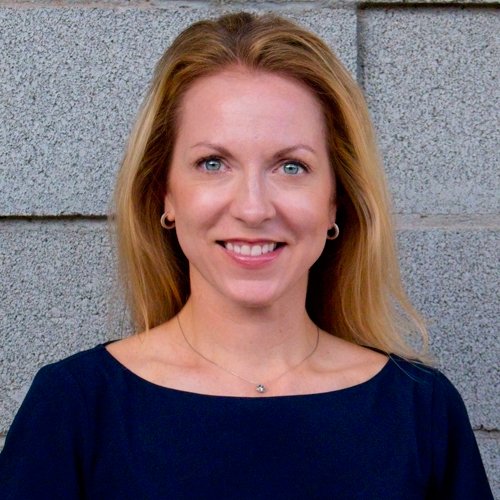A few months ago, I wrote about data sharing in local governments. Here is that piece:
Sharing is something we all learned in kindergarten – how to share our toys, our snacks, our hugs, and our germs. We all probably bought into the spirit of sharing around this age, realizing that with sharing, more good things are available to us and to our friends. This is true too of sharing information. Think about how much we benefit from reading online reviews or a good tip from a friend on that great new restaurant or which washing machine to buy.
Governments are learning the same lessons. In Maricopa County, our 50-plus departments are breaking out of silos to share data and information and rely on evidence for best decision-making practices. The results: better performance, increased efficiencies, more accurate planning, better communities, and greater outcomes for citizens.
In the County’s criminal justice system, instead of implementing programs, policies, and practices as a matter of convenience or anecdote, the County’s criminal justice agencies and departments broadly employ evidence-based practices. In its simplest form, this means that nothing happens without evidence that it has worked in a previous setting. As one judge called it, “stuff that works.” For example, Adult Probation has engrained evidence-based programming throughout their culture and applied these practices to effectuate better outcomes and reduce recidivism for all of their probationers, including mental health populations and women who have experienced trauma.
Yet evidence is hungry for data.
Earlier this year, the Sheriff’s office, Correctional Health Services, the Integrated Criminal Justice Information System department (“ICJIS”), and Justice System Planning and Information worked to converge their disparate data to tell a story about the homeless, mentally ill frequent jail users in our County criminal justice system. This shared data shined a new light on our understanding of the interplay between homelessness and mental health in our jails, allowing better understanding for County-level policymakers. These innovative, common-sense strategies are becoming more common among County leaders.
Sharing isn’t just internal. The ICJIS team is a leader in facilitating smooth transfers of criminal history data among county, state, and federal authorities resulting in enhanced and more efficient public safety. ICJIS developed the Justice Web Interface (JWI), a portal to hundreds of data sources used to gather criminal history information on subjects. JWI gathers data from all fifty states, U.S. territories, and other federal and local databases and quickly combines that information into a readable, secure packet for criminal justice partners. JWI is used by over 2,400 Sheriff, Adult Probation, Superior Court and County Attorney users in Maricopa County, and is currently licensed to over a dozen outside entities at state and federal levels.
And, County successes with data sharing go far beyond the criminal justice system – recently, the Flood Control district demonstrated the usefulness of data and mapping to assist citizens with severe weather. Within the past few years, numerous County agencies and departments collaborated to build a centralized place for GIS research. And, Correctional Health Services partners with the Health Information Network of Arizona (HINAZ), the largest statewide health information organization in Arizona, to confirm medication information to improve coordination of care for incoming jail detainees.
Widening our view a bit further, the County can count itself among local and national governments that are using more open data to communicate with their citizens, to increase transparency in governing, and to fostering public engagement with the government it pays for.
The federal initiative data.gov is a foundational example of this, providing a site where citizens and researchers alike can access over 150,000 datasets. Such data is used by citizens to innovatively solve problems in their communities, sometimes without relying on government. For example, open medical and diagnostic data have been used to feed patient forums for better treatment advocacy. Mobile transparency tools have been developed too, like an application for farmers to receive real-time market information. Farmers can adjust their crop strategies accordingly, resulting in greater efficiencies.
Such open data is also used to promote economic growth for businesses and communities in the finance, education, and energy fields. Trulia relies on government data to provide real estate and community data to the public, allowing smarter purchases and investments.
How does this happen? Shared missions make this possible. Stronger data infrastructure and availability will result in greater data sharing, especially as “open becomes the default for data.” While local governments have carefully balanced security and privacy concerns related to protected data such as criminal histories, they have also stretched to make usable information available to the public to better their communities. Maricopa County is no exception to this.
What’s more, as the Millenials / DotNets grow into their careers and become our policy-makers and decision-makers, look for greater transparency in government and openness to data sharing. For this generation, technology sharing has always been an integral part of their lives.
The County’s successes in data sharing and greater use of evidence in decision-making are part of a greater movement. “Movement” may be a strong word, but the opening of governments and society to information has recently been labeled a zeitgeist – a trend, thought or feeling characteristic of a period in time. Data sharing is truly the spirit of our time.



 Thanks for visiting FirstEval. Please reach out if you'd like to talk about your data.
Thanks for visiting FirstEval. Please reach out if you'd like to talk about your data.